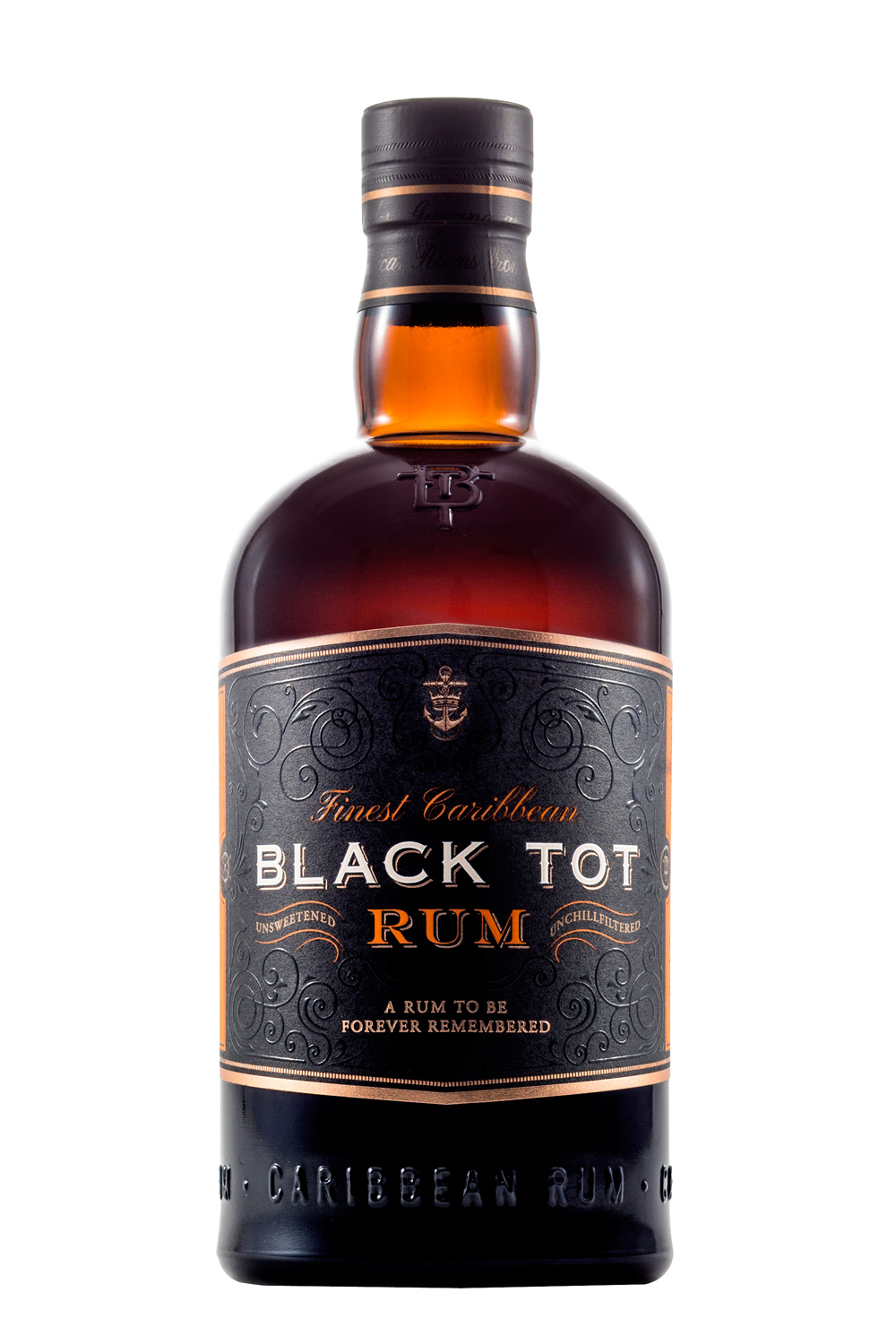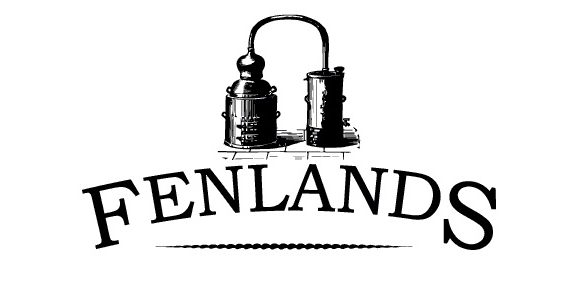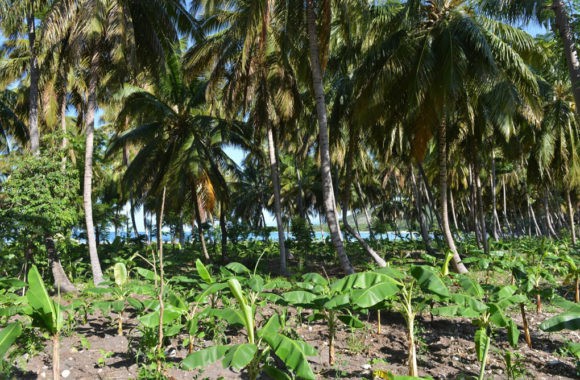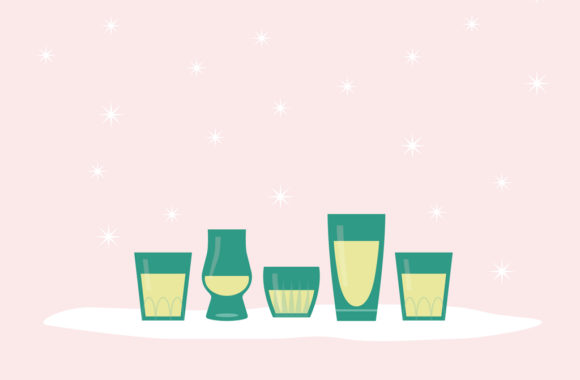
Black Tot, Contemporary Rum: An Interview with Mitch Wilson
· James Phillips James Phillips on
Rum has been my go-to spirit from the moment I developed the stomach for distilled liquids. Although it is tempting for me to profess that I had a cultured palate from the moment I started getting into alcohol, that was not the case. For a young (legal) palate, the silky sweetness, which covered up the alcohol burn just right, was perfect. I wouldn’t say I had a sweet tooth, but thinking back on it now, the rum and gateway pints of cheap cider suggest otherwise…
My taste for rum has been a constant ever since; in part due to a generous uncle with a passion for this great spirit, a well-stocked drinks cupboard and a generous pour. However, over time, I have lost my desire for sugar and as such have been put off by many of the mainstream offerings. I want something more than just sweetness. Thankfully, we are currently experiencing a wave of new products that explore the many faces of a category that at times can seem all too one dimensional.
A recent addition to this category is Black Tot Finest Caribbean Rum. Taking a modern approach to traditional Navy rum, it brings back to life a very classic and under-appreciated style that incorporates a broad range of flavours–from tropical fruit, to chocolate and coffee–thus moving away from overtly-rich, somewhat confected style to which we have become accustomed. Having tasted it and loved it, I had a chat with Mitch Wilson, Global Brand Ambassador for Black Tot, to find out his thoughts on the current state of the rum category, where it is going, and just what is so different about Black Tot.
James Phillips: With the current swell of enthusiasm directed at rum, it must be an interesting time to work directly with that category?
Mitch Wilson: I don’t think there’s ever been a better time to work in the rum industry. More than ever before, there is a growing appreciation and attention to detail to the rum in our glass, where it is coming from, and who made it. More and more, bars and bottle stores are improving and expanding their rum offerings and making extra shelf space available to accommodate. The level of knowledge amongst drinkers and rum aficionados is higher than ever, and producers and blenders are being more and more forthcoming with all the geeky details about their rums, which in turn helps raise everyone’s knowledge even further.
What do you see as the current state of rum, and how do you see it developing in the future?
Rum feels like it has been on the verge of being ’the next best thing’ for some years now, and many spirits writers have long been tipping rum to make the leap from the lower reaches to those dizzying top shelves occupied almost exclusively by single malt whisky. In some places, you might argue rum is already there: you could visit enough rum-centric bars and educated bottleshop owners to happily convince yourself that rum had already won the good fight – and that ‘quality’ rum is the new norm. However, these places are often the exception to the rule: every rum bar you visit is likely outnumbered several times over by even better stocked whisky bars and gin joints; compare the rum offering in shops to other spirits and chances are you’ll be better catered to if you enjoy delicacies from outside the Caribbean. Being a rum lover at a bar can sometimes feel like being a vegetarian/vegan visiting a steak restaurant – we’ve progressed to the point where there’s at least some options available to you, but the venues dedicated solely to your cause are few and far between. Perhaps, in time, quality rum offerings will come to be as standard as the vast selections of whisky and gin available – us rum ambassadors are working on it!
How does Black Tot play into this? Can you give us a bit of background behind the idea, and tell us what is special about this product?
Our brand started 10 years ago, when Sukhinder Singh tracked down the last remaining Navy Rum flagons filled after Black Tot Day in 1970. The Navy Rum blend had historically been served upon ships from 1731 for 239 years, and was sourced from a continuous blend created over 100 years – there has been no rum like it created before or since. In the past year, we released our Black Tot Finest Caribbean Rum, which is essentially our ‘reboot’ of the Navy Rum blend, adjusted to the flavour profile we think a ‘crew’ would enjoy today. For example, where Jamaica was originally cut out of the original Navy Rum blend, we’ve reintroduced it in Black Tot Finest Caribbean because we love it (and we thinks others will too).
My goal with Black Tot is to make our rum the most transparent blends in the rum world in terms of information. That includes not just sharing basic distillery info, but also everything from chemical analysis to blend compositions – I believe that by knowing the recipe and thought process that went into the rum, you have a better appreciation for the finished product. At our online masterclasses and in real life – once we’re allowed to again – we will be giving people the individual blend components in our rum to taste, so people can taste the individual islands and distillery styles, and then see how they come together in a blend.
Black Tot Finest Caribbean Rum, 46.2% ABV (70CL)
Black Tot combines elegant, rich flavours from Barbados and Guyana with the bold character of Jamaica. This multi-layered rum is unsweetened, un-chill filtered and bottled at 46.2% ABV for extra flavour. Born from century-old naval traditions, this rum is created for the palate of today, for the here, for the now. A rum to be forever remembered.
Do you see a big difference with the UK compared to other markets? I would hesitantly say that the UK has a bit of a sweet tooth.
It’s hard to generalise the flavour palate of an entire country! I know when I bartended in America the perception was that Americans had a sweeter palate than guests in the UK – but everyone is individual, and just because a drink doesn’t get sent back, doesn’t mean they loved it either. I think people the world over enjoy balanced drinks, whether that’s in a cocktail or in spirits themselves. When it comes to rum – there’s no denying that for many rums the norm has been to add some sugar to the final distillate – leading to many believing that rum is inherently sweet, which is not true. No sugar makes it through the distillation process – any sugar content in your rum has to be added ‘back in’ to the rum.
With Black Tot Finest Caribbean, we opted not to add any sugar to our rum, as both our blender Oliver Chilton and owner Sukhinder Singh are first and foremost whisky drinkers – and they wanted to make a rum that they themselves would enjoy drinking. So any whisky drinkers looking to convert to the Caribbean, this could be a great starting point!
If I was just getting into rum, where should I start? What should I be looking for?
Rum has so many different potential starting points, it can be daunting at first glance. The first thing to be able to get a grasp on is regions. If you’re a wine drinker, chances are you have a preferred style, region, maybe even a specific grape varietal! As a whisky drinker you may have a preference on Scotch vs. Irish vs. American vs. Japanese. Within any of those regions, you may have a favourite distillery, age range, or cask finish. So for rum, we need to start by narrowing it down: do you prefer Barbados, Guyana, Martinique, or Cuban style rums? I always recommend starting in Barbados – it’s the ‘home’ of Caribbean rum (records dating back to the 1600s show molasses was first distilled here) – because Barbadian style rum is well-balanced (almost always a pot & column still blend) and is generally elegant and approachable. I think of Barbados rum as a great measuring stick for flavour; if you want something lighter, try a Cuban or Trinidadian rum. Heavier and funkier, head to Jamaica! Grassier and more vegetal, Haiti or Martinique are great options. Or richer and sweeter, try something from Guyana or Venezuela. There are many more possibilities than just these countries, but understanding the differences between these regions – and finding your favourite flavour profile within them – is a great starting point!
Likewise, if I am a whisky drinker, why should I explore rum?
Every now and then it’s fun to ditch your waistcoats and monacles and throw on a tiki shirt! I find whisky lovers are often fans of any quality spirits – the reasons why many of them have not explored rum before is normally because they haven’t been exposed to the best rums out there yet. If you only ever had very basic, low quality rums to choose from, you would never become a rum drinker. Similarly if you only ever had cheap wine, whisky, or gin, you’d probably think that none of them were that great either. It’s worth spending a little more, getting something a little higher end, and you’ll find there’s this incredible diverse variety of rums to choose from which are exceptional and would happily stand toe to toe with any of the best whiskies out there.
“More than ever before, there is a growing appreciation and attention to detail to the rum in our glass, where it is coming from, and who made it.”
Given that we are seeing a much greater diversity of rums landing in the UK, and with that perhaps a greater appreciation of the difference in style country-to-country and even village-to-village, will there be more of an emphasis on the concept of terroir? We have seen it recently with Agave spirits and new whisky distilleries such as Waterford.
Terroir in rum can seem unusual from the perspective of say a wine drinker, as it depends largely on the raw material that is being used. If that raw material is molasses, then terroir in the traditional sense can seem irrelevant: many rum-producing countries no longer make enough molasses from their local sugar industry to supply their rum-making needs, and as such they source molasses from other countries to make their rum. In these instances, we refer to terroir more in terms of regional differences in yeast strains used, distillation style, and local climate for ageing, which still provide a huge variety of ’terroirs’ to distinguish between. Unfortunately, misnomers like “white, gold, and dark” and “English, Spanish, and French” tend to hold people back from focussing on the specific regions and terroirs that rum is coming from. Grouping rums together by colour is about as useful as saying all red wine tastes the same – it teaches nothing about the regions and varietals available to you. Grouping rums by ‘English style’ would be like saying you like ‘European whisky’ – which one?! The more specific with provenance we are, the better we understand the category.
However, if you really want to look at rum terroir in a more traditional sense, look for rums or (rhums) with a sugarcane juice base. Sugarcane juice can not be transported any great distance – it’s high sugar content and exposure to wild yeast from sugarcane stalks when pressing means it will start to ferment spontaneously within a very short time frame. As such, rums and sugarcane spirits that use sugarcane juice as a base are most likely to be fermented and distilled within the same region that the sugarcane itself was cut and pressed. Martinique for example makes Agricole rum from sugarcane juice, and it’s AOC make it a great example of island specific terroir. On Haiti, the local rum/sugarcane spirit is called ‘Clairin’, and the hundreds of local distilleries on the island are wonderful examples of localised sugarcane terroirs, each with their own distinct flavour profiles.
How do you think this is impacted by the role of the blender?
The blender plays an integral part to the final flavour of your rum: in some distilleries the distiller and the blender may be the same person, while in others the blender may have the final say on how the various distillates are put together. Think of the blender as the composer that pulls all the musicians and instruments in the orchestra together to harmonise them. Or like a chef who has access to a multitude of amazing ingredients – knowing how to put those flavours together is just as important as the quality of ingredients themselves. So the rum blender is key; in some instances the goal is consistency from batch to batch, making a solid reliable rum blend that will be consistent year in, year out. In other instances, particularly with smaller limited releases, the goal is to create a moment in time – something exceptional that stands out from the regularly available offerings from that distillery. Either way, the palate and preferences of the blender will determine what you ultimately get to enjoy in your glass. With Black Tot, our Last Consignment was blended continuously for over 100 years, and evolved with the various distilleries and rums from around the world that were added to the mix, and to the flavour preferences of the various blenders in charge at the time. With Black Tot Finest Caribbean, we are able to control the flavour profile in house, with Oliver Chilton (Head Blender, Elixir Distillers) overseeing all final blends here.
Lastly, Rum has a complicated history with the plantation system, slavery and colonialism. Indeed, Plantation has recently announced its intention to re-brand in light of the heightened focus these issues have seen recently. Do you think it is important that rum producers and brands acknowledge its past?
I don’t think it’s possible to work in the rum industry today without both acknowledging and continually educating yourself about rum’s history. The origins of rum are synonymous with the spread of colonialism and slavery. I believe it’s our duty both as brands and as rum ambassadors to help use our platform to share all aspects of rum’s history as best we can, and to amplify and share that platform with voices in the Caribbean and all rum-producing countries wherever possible. It’s encouraging to see brands that are willing to make changes that are respectful of the wider community. Every positive change, no matter how small, moves our industry forward – and encourages others to do the same. We need to work together to ensure that rum’s past doesn’t equal rum’s future – choosing to buy rum from distilleries that are transparent in how they are looking after their workers and taking care of people. Sourcing molasses and supporting sugar-producing countries that are paying a fair wage and creating safe working conditions. As brands and rum lovers, we have the opportunity to introduce people to the incredible world of rum, respectfully share its history, and encourage them to invest in this remarkable spirit and its regions of origin. Some may even be in a position to one day travel to these countries, visit distilleries, and support their local businesses – and rum can be the spirit that takes them there.








